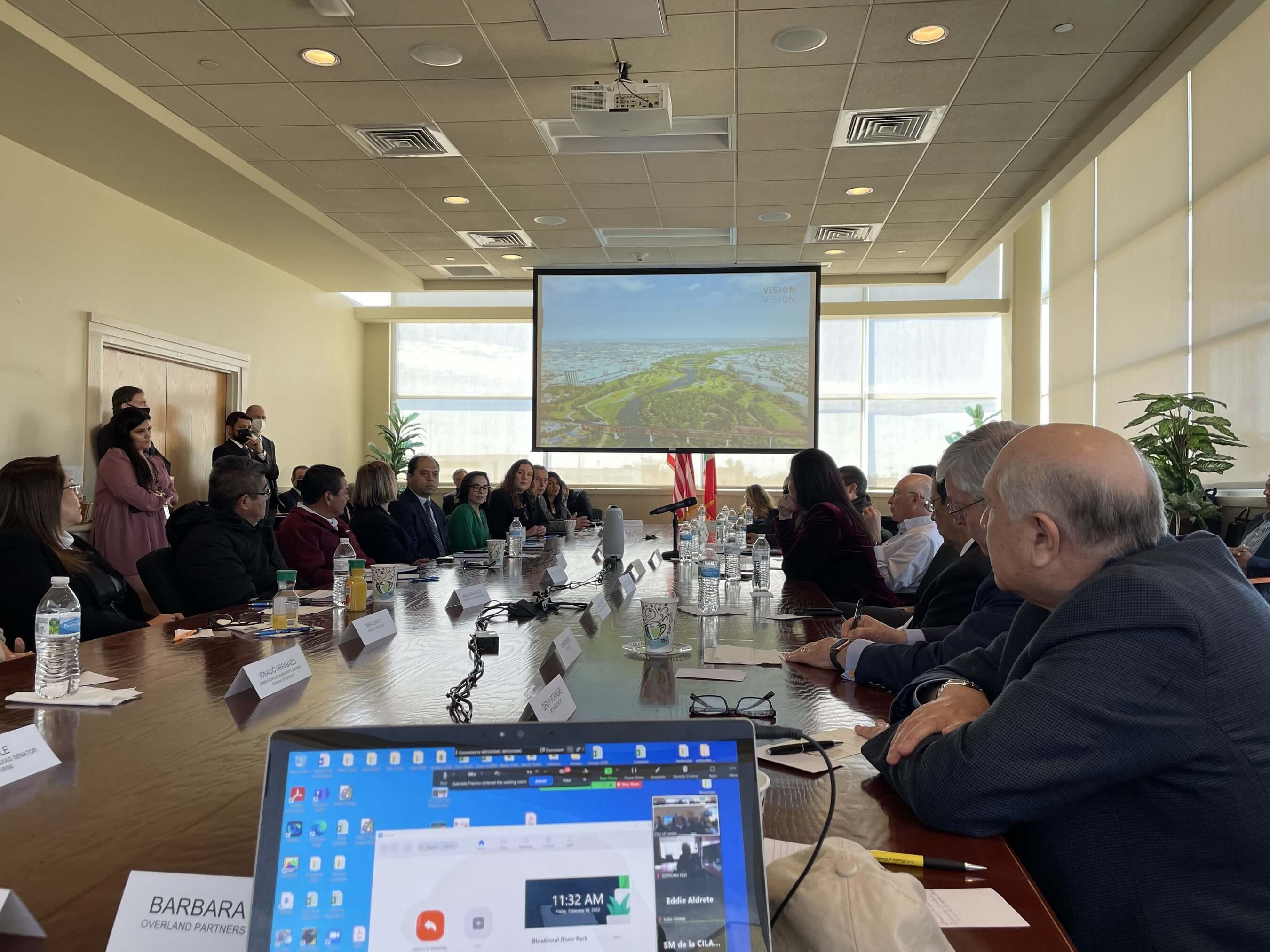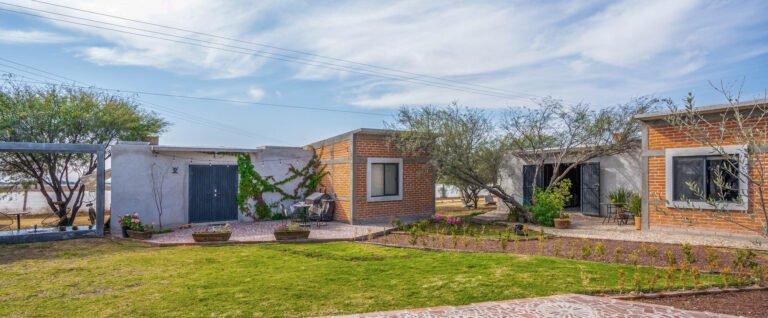Binational River Park between Texas and Mexico selects Overland Companions to create design plan
A planned 6.3-mile-long park straddling the Rio Grande River along the United States–Mexico border is quickly coming together with the announcement that San Antonio-based architecture and urban design firm Overland Partners, working alongside local partner Able City, have been tapped to create conceptual design plans for the first phase of the ecological restoration project.
As detailed in a press release, the firms were unanimously selected by the Laredo City Council and members of Binational Working Group, a public-private consortium, earlier this month. On February 18, a site plan, aerial renderings, and eye level perspectives for a one-mile stretch along the Rio Grande, known as the Rio Bravo in Mexico, were presented by the design team to the Binational Working Group, mayors, and community and business leaders hailing from both Laredo, the 10th most populous city in Texas and the third-most populous American city along the southern border, and the Mexican city of Nuevo Laredo, the third-most populous city in the state of Tamaulipas. The two cities, which together form a bustling and economically vital trade border crossing, are linked by three international vehicular bridges and a rail bridge over the Rio Grande/Rio Bravo.
Francisco Javier García Cabeza de Vaca, the governor of Tamaulipas, U.S. Ambassador to Mexico Ken Salazar, and U.S. Consul General for Nuevo Laredo Deanna Kim were also present at the February 18 meeting.
“The journey has begun, and we are ecstatic to engage in the beginning phases of this rewarding project alongside our sister city of Nuevo Laredo, Tamaulipas,” said Laredo Mayor Pete Saenz in a statement shared by the Laredo Morning Times following the presentation. “We had the honor of welcoming U.S. Ambassador for Mexico Ken Salazar and presenting him with our ideas and vision for the Binational River Park.”

The February 18 presentation followed a three-day workshop held from February 7 to 9 in which Overland Partners and Able City, joined by experts from OLIN and ARUP along with regional engineering firms Crane Engineering and LAN Hydrology, met with members of the Binational Working Group and local stakeholders “to understand project needs and study the surrounding physical context.” In total, over 35 people participated in that workshop, which included visioning exercises and site visits and resulted “in a unified concept of the Binational River Park.”
Resulting from that workshop was a project-guiding mission statement:
The Binational River Park at the Rio Grande-Rio Bravo in Laredo and Nuevo Laredo connects and celebrates our common culture on the United States and Mexico border. It reclaims our shared history, spurs the economy, promotes security on both sides of the river, and restores the ecological treasure we call home. The first of its kind, this international conservation project enhances our quality of life and serves as a prototype for border cities around the world to follow. Two nations, one community. One river. One park.
“We are inspired by the Binational River Park and excited by the unique challenges an aspirational project of this magnitude presents – environmentally, socially, and culturally,” said Rick Archer, senior principal and CEO at Overland Partners. “Together with our partners and stakeholders, we want to create an international cultural destination and model for cooperation, conservation, and community.”
While plans for the Binational River Park, which was first publicly announced in early December 2021, are still in the early conceptual stages, it has been envisioned as being similar to San Antonio’s famed River Walk, with Overland Partners describing the project as one that will “re-establish the river’s ecosystem, revitalize the economy, add cultural assets, such as public art, and attract tourism on both sides of the river, transforming the space into a distinctive international landmark that joins two communities and nations into one.”
“Rivers are sources of life, they’re sources of culture, heritage and history, and when properly embraced, they can be a place where people congregate and come together,” the Laredo Morning Times reported San Antonio Mayor Ron Nirenberg as saying late last December when he joined Laredo Mayor Saenz, Nuevo Laredo Mayor Carmen Lilia Canturosas, and others to announce the project. “So the work that will take place on this beautiful binational park that brings this critical river back to its life and prominence is an opportunity again for us to establish an important future that the United States has with Mexico.”
Although a project timetable or costs for the Binational River Park have not been formally announced, the project is expected to cost $100 million or more.
While the idea for a binational park along the U.S.–Mexico border is certainly both promising and unique, it wouldn’t be technically the first.
Established in 1971 as a welcoming place for friends and family members separated by the border to see each other and converse in person, the half-acre Friendship Park straddles San Diego, where it is part of Border Field State Park, and Tijuana. The U.S. side, however, shuttered during the pandemic and remains closed to visitors. (Even before the pandemic, access to the park on the U.S. side had become much more limited beginning in the mid-1990s when U.S. Border Patrol ramped up security measures along the San Diego-Tijuana border.) Once a place of cross-border bonhomie, Friendship Park was one of 13 endangered and under-threat landscapes included in the 2021 edition of The Cultural Landscape Foundation’s annual Landslide report.


